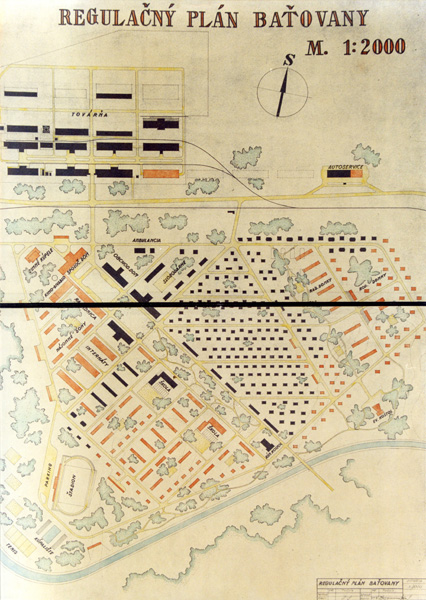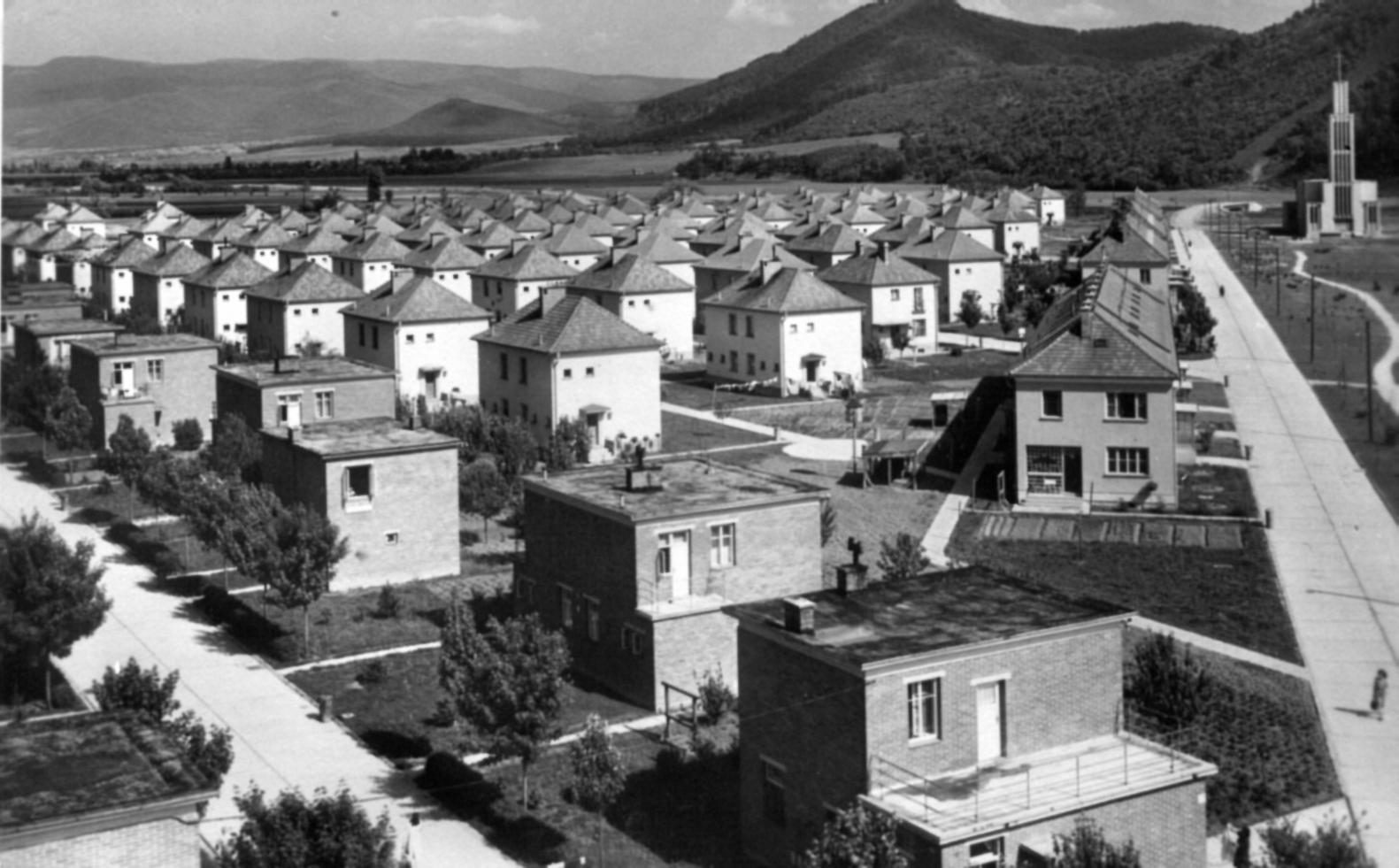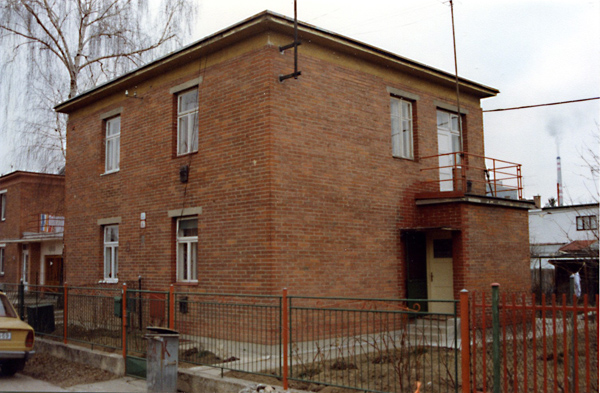| address architects project realization |
Partizánske, originally Baťovany Jiří Voženílek (regulatory plan, industrial structures), Vladimír Karfík (church, single-family houses), Miroslav Drofa (Baťa industrial schools, primary schools, family houses), František Fackenberg (family houses and management of the local design office), František Kučera (social centre), Jozef Fabianek, Alexander Plačko, Karol Ružek regulatory plan 1938, other projects on a regular basis after 1938 1939 – 1949 |
Creation of the town of Baťovany was the most ambitious project attempted by the Baťa shoe corporation in Slovakia. The town was planned and built following a regulatory plan by the Czech architect Jiří Voženílek, aiming to create an entirely new ideal industrial town for 5,000 to 15,000 residents. Individual functions of the city were divided into relatively independent sections, depending on the point of the compass and the direction of the prevailing wings. The industrial zone was placed on the town’s northern edge, close to the main road and rail line; it was linked to the town centre by a broad street known as the ‘promenade’. This street led into the main square, Námestia práce [Square of Labour], which formed the main compositional axis of the town with the individual residential districts issuing off of it. On the square, the plans intended the construction of the most important public buildings, such as the ‘Social Centre’ (F. Kučera, 1939 – 1941), cinema, the Baťa industrial schools (M. Drofa), primary and secondary schools. Several of these buildings were actually realised during the 1940s, others were built along the lines of the residential plan even after the nationalisation of the Baťa works in the 1950s. On the southeast edge of the square, it merged into a large town park, where the chief landmark was the Roman Catholic church (V. Karfík, 1942 – 1949).
The buildings of the Baťa Company were marked by standardisation, pre-fabrication and unified design. The basic standardising unit was a structural field of a reinforced-concrete skeleton with dimensions of 6.15 x 6.15 m, forming the structural basis of all of the industrial as well as public buildings completed by the corporation, giving all of these buildings an indelible single aesthetic. The first manufacturing hall, the ‘triple-decker’ was built in Baťovany in 1939.
As in the other Baťa company towns, the majority of residents either worked in the factory or were connected in some other way with the corporation. Thanks to the strong sense of mutual solidarity, the residents formed a relatively close-knit community, known as the ‘Baťovci’, and the functioning of the town was largely through this community spirit. After the nationalisation of the factory in 1948, these social ties gradually became loosened, and the complete dissolution of the original community was finally crowned by the sweeping economic changes following the fall of Communism in 1989. Nonetheless, the architectural fabric of Partizánske, as Baťovany is now named, still represents a well-preserved and highly liveable instance of an original Baťa Company garden city. Its urban concept and architecture are a valuable document of the exceptional history of this locality, and as such represent an important component of cultural heritage.
Worth noting is a feature not found elsewhere in the other Baťa towns: though the residential districts were created using standard designs for single-family or duplex houses, in this instance a number of modifications were made even in the course of construction, documenting the tastes of the region, material specifics, and equally the social situation in the briefly independent (Nazi-aligned) state of Slovakia in the 1940s, when the houses were completed.
Literature:
KARFÍK, Vladimír: Architekt si spomína. Bratislava, SAS 1993, 329 p.
DULLA, Matúš – MORAVČÍKOVÁ, Henrieta: Architektúra Slovenska v 20. storočí. Bratislava, Slovart 2002, 512 p.
MORAVČÍKOVÁ, Henrieta: Baťovany – Partizánske: vzorné priemyselné mesto. Architektúra & Urbanizmus 37, 2003, 3 – 4, p. 113 – 145.
TOPOLČANSKÁ, Mária – DORICOVÁ, Slávka: Variácie štandardu. Architektúra & Urbanizmus 37, 2003, 3 – 4, p. 147 – 169.
MORAVČÍKOVÁ, Henrieta: Social and architectural phenomenon of Bpataism in Slovakia. Slovak Sociological Review 36, 2004, 6, p. 519 – 543.
NOVÁK, Pavel: Zlínska architektura. Zlín, Agentura Čas 1993, 320 p.
Source of pictures:
Department of Architecture Archive ÚSTARCH SAV, Archive of Matúš Dulla




